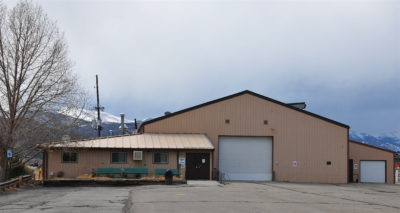With two deaths locally from the coronavirus known as the COVID-19 virus, and infections increasing, plans are underway to provide for extra patient beds at the Chaffee County Fairgrounds, if need arises. The step is part of a statewide effort to expand hospital bed options as the number of infections, hospitalizations and deaths increase in Colorado.
County Emergency Manager Richard Atkins met with officials from Heart of the Rockies Regional Medical Center and other health care planners this week at the fairgrounds, to begin the planning process.
Atkins said he’s been working on alternate care facilities planning for years in Colorado. The Regional Medical Emergency Trauma Advisory Councils have looked at issues surrounding patient treatment, medical transfers, ambulance equipment requirements and more. They get grants from the Colorado Department of Public Health and Environment for beds, triage and other medical equipment, Atkins said. There are about 11 such advisory councils in the state.
In addition, the state Healthcare Coalition has units that associate with the nine respective Homeland Security regions.
Planning that has been done for many years, he said, examines what happens when hospital are under ‘surge’ conditions, whether from a plane crash, a major disaster or a pandemic scenario.
The conditions for which that kind of planning becomes necessary are extreme; “They’re maxed out; [the question becomes ] what do they do with their patients?” Atkins said.
The planning involves Emergency Management, Public Health, the hospitals and other health providers, ‘So we have a plan on what you do when we have to surge the hospital,” said Atkins. “When it gets overloaded, and they have no place to go.”
Atkins said the plan now is that HRRMC would be designated to care for patients designated Tier 1 or Tier 2 patients; the critical care and acute care patients.
Critical care patients might be on ventilators or have need for 24-hour coverage. Acute care patients are generally not going to be on ventilators, but may be contagious and in need of focused care. Caring for those patients, when the hospital is full, could involve establishing rooms in the local health clinics, Atkins said, among other options.
Patients designated as Tier 3, on the other hand, needing non-acute care, or who have recovered from Tier 1 or 2 conditions, but still need care, would be the type of patient who could be transferred to a location such as the fairgrounds.
Atkins said those patient beds would more likely be cots rather than mechanized standard hospital beds.
Tier 4 level patients in quarantine could be supported at area hotels or motels. This could also include patients who are post minor surgery or other treatment, who just need observation for a short time before going home,
Thus far, Atkins pointed out the procedures are conceptual; no finalized plans yet exist here for how the system would be implemented. With the expected surge of COVID-19 in the state of Colorado expected in the next two to three weeks, this might be a question the county should confront sooner, rather than later.
According to Atkins, the preliminary plans could include establishing ‘pods’ of patient beds grouped together. Another consideration is whether the medical equipment required at the fairgrounds would require additional power, perhaps meaning extra generators.
There are some 13,000 licensed beds at 104 hospitals in the state of Colorado. But experts are hard pressed to know if they will be adequate, based on the Centers for Disease Control (CDC) projections for 2,000 more hospitalizations and the need for up to 800 more Intensive Care beds in the state of Colorado becomes a reality. That is a best case scenario.
Scott Bookman, the Colorado Department of Public Health and Environment’s incident commander for the coronavirus pandemic, said it is important to realize that the physical space and capacity within the state healthcare system will be challenged.
The preparation time is short. Bookman said the goal of increasing the ICU beds in hospitals statewide from the current 1,850 beds, to about 5,000, has to be accomplished by April 18.
Atkins said the extra patient load that might be transferred to the main building at the fairgrounds would be lower-level care patients who do not need the kind of acute care that more acute patients would need.
In addition, he said, planners are working on seeking other temporary accommodations for patients that are about to be released, but who still need some facility with minimal care before it is prudent to send them home.







Recent Comments